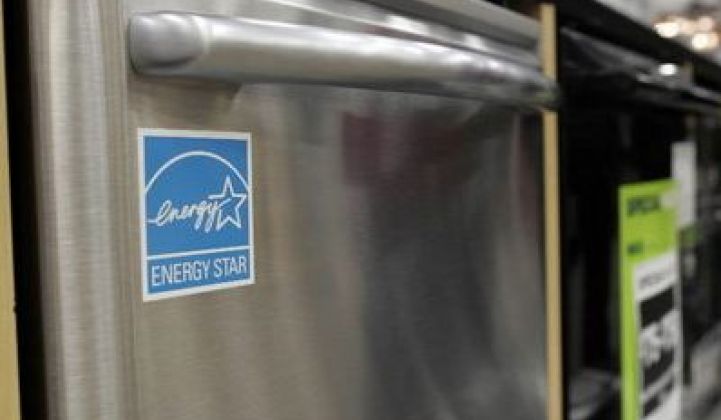When the federal government decides whether to set standards requiring the products we use in our homes and businesses to use energy more efficiently, it factors in estimates of how much the items' price tags would change compared to the value of the energy savings. However, a new report shows the Department of Energy (DOE) has significantly overestimated cost increases -- by as much as tenfold.
Because the DOE generally selects standards that provide net cost savings to consumers, this means the cost of more efficient products has been much lower than anticipated and the savings to consumers have been even greater.
In fact, the DOE predicted that manufacturers’ sales prices would increase by an average of $148 for appliances ranging from clothes washers to air conditioners after the agency set standards requiring them to use less energy.
Instead, the actual average across the nine rulemakings examined was a cost decrease of $12, according to the analysis by the American Council for an Energy-Efficient Economy (ACEEE) and the Appliance Standards Awareness Project (ASAP).
Specifically, the DOE estimated before new standards were set between 1998 and 2010 that product price tags would go up by an average of 35 percent. However, the actual prices for the refrigerators, clothes washers, water heaters, air conditioners, and fluorescent lamp ballasts didn’t change on average after adjusting for inflation.
According to the ACEEE/ASAP report, many of the appliance prices actually went down under the new standards, and in cases where they did go up a bit, the increase was far lower than the DOE estimated. “In other words, DOE on average overestimated manufacturer selling price increases by about a factor of 10,” the report authors wrote.
I’m no math whiz, but I know that’s a significant difference that affects all of us.
Why the difference matters
These overestimates make a difference when it comes to our energy bills. Because the DOE generally chooses to pursue efficiency standards that are cost-effective for consumers -- which means the agency's various analyses show that the value of the estimated energy savings outweighs the predicted increase in the product’s price -- it’s likely that in some cases, creating higher standards to save even more energy would have been justified. In addition, it means the actual benefits from the standards were even higher than estimated.
Energy efficiency is our cheapest, cleanest energy “resource” because it allows us to do the same amount of work -- or even more -- with less power. And less power also means less dirty power generation.
Already, energy savings achieved through improvements in energy productivity have exceeded the contribution from all new supply resources in meeting America’s growing energy needs over the past four decades. Previously, ASAP and ACEEE estimated that net savings from existing standards alone would be $1.1 trillion -- and the new analysis indicates that these savings in reality are even higher. Further, a number of reports, including a recent one from NRDC, have shown that huge opportunities to save more energy -- and money -- remain untapped.
For example, ACEEE issued a different report earlier this summer that said current technology could be used to cut nearly in half the amount of energy used by devices and equipment commonly found in U.S. homes and businesses. That’s a lot of money and energy we could save by making televisions, ceiling fans, computers, elevators and MRI machines more energy-efficient. In fact, the study’s lead author, Sameer Kwatra, said that if consumers upgraded to the most efficient products on the market today, “We could save as much energy as Argentina uses in an entire year."
That would be a significant difference, too.
Why are the DOE's calculations so far off?
According to the ACEEE/ASAP product cost analysis, this isn’t the first time studies have shown that the DOE was overestimating product costs. The agency has taken steps to improve the accuracy of its price estimates, but they’re still “substantially overestimated.”
The paper concludes that more analysis is needed, but one hypothesis is that manufacturers are using good old American ingenuity and technology -- and discovering new, lower-cost ways to meet the standards than DOE anticipated. The report says other possibilities might be that in at least one analysis used, manufacturers opposed to efficiency standards might submit higher cost estimates, or the prices submitted for certain niche products might not reflect the ultimate cost once they become mass-produced.
Whatever the reason, we hope the DOE will continue to improve its estimation processes so it can make decisions based on more accurate data. When that adds up to energy-savings standards that mean more money in our pockets and less carbon dioxide pollution in our air, everyone benefits.
***
Pat Remick is the senior energy communications strategist at the Natural Resources Defense Council. This piece was originally published at NRDC's Switchboard blog and was reprinted with permission.



